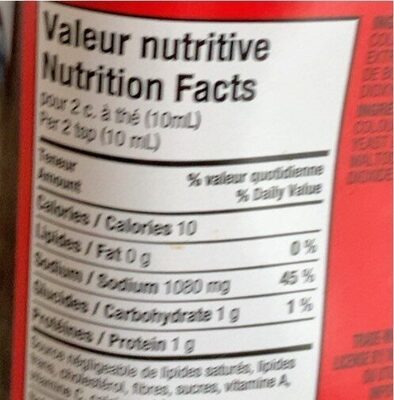Bovril Boeuf - 750 ml
This product page is not complete. You can help to complete it by editing it and adding more data from the photos we have, or by taking more photos using the app for Android or iPhone/iPad. Thank you!
×
Barcode: 0061400000182 (EAN / EAN-13) 061400000182 (UPC / UPC-A)
Common name: Bouilon de boeuf concentré
Quantity: 750 ml
Packaging: fr:Bouteille plastique
Brands: Bovril
Categories: Broths, Beef broth, Groceries
Origin of ingredients: United States
Manufacturing or processing places: Unilever TRADE-MARK OWNED OR USED UNDER LICENSE BY/MARQUE DE COMMERCE DETENUE OU UTILISEE SOUS LICENCE PAR IMPORTED BY/IMPORTE PAR UNILEVER CANADA, TORONTO, ONTARIO M4W 3R2
Link to the product page on the official site of the producer: http://www.knorr.ca 1-877-77-KNORR (775...
Stores: IGA
Countries where sold: Canada
Matching with your preferences
Environment
Packaging
Transportation
Report a problem
Data sources
Product added on by crou92
Last edit of product page on by packbot.
Product page also edited by date-limite-app, kiliweb, teolemon, yuka.D4tdJtiLAO0kMsHdzaIkxBLhD_e5J9xaFyJcow, yuka.sY2b0xO6T85zoF3NwEKvlhNuUorziRXCBhH4uWDW1PyVcZOxechS46LlNag.










